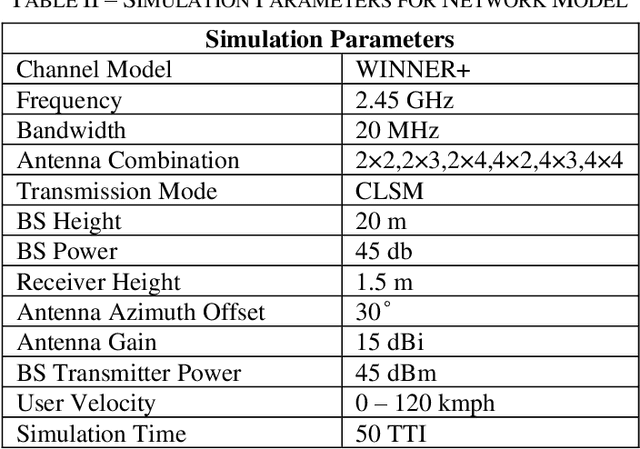Mariea Anzum
Configuring Antenna System to Enhance the Downlink Performance of High Velocity Users in 5G MU-MIMO Networks
Aug 05, 2021
Abstract:An exponential increase in the data rate demand prompted several technical innovations. Multi User Multiple Input Multiple Output (MU-MIMO) is one of the most promising schemes. This has been evolved into Massive MIMO technology in 5G to further stretch the network throughput. Massive MIMO tackles the rising data rate with the increase in the number of antenna. This comes at the price of a higher energy consumption. Moreover the high velocity users in MU-MIMO scheme experiences a frequent unpredictable change in the channel condition that degrade its downlink performance. Therefore a proper number of antenna selection is of paramount importance. This issue has been addressed using machine learning techniques and Channel State Information (CSI) but only for static users. In this study we propose to introduce antenna diversity in spatial multiplexing MU-MIMO transmission scheme by operating more number of reception antenna compare to the number of transmission antenna. The diversity improves the downlink performance of high velocity users. In general our results can be interpreted for large scale antenna systems like Massive MIMO. The proposed method can be easily implemented in the existing network architectures with minimal complexity. Also it has the potential for solving real-life problems like call drops and low data rate to be experienced by cellular users traveling through high-speed transportation systems like Dhaka MRT project
 Add to Chrome
Add to Chrome Add to Firefox
Add to Firefox Add to Edge
Add to Edge